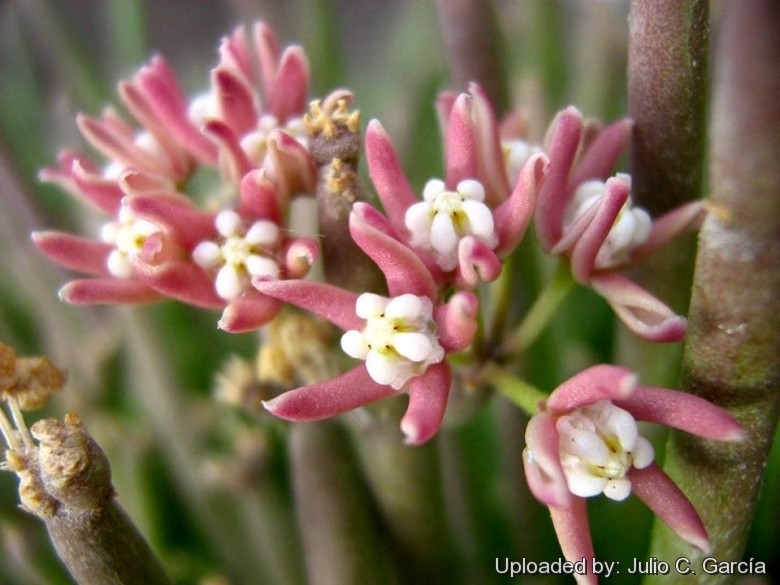
Cynanchum vanlessenii Photo by: Julio C. García
Origin and Habitat: Yemen, Ethiopia, Kenya and Tanzania.
Synonyms:
See all synonyms of Cynanchum vanlessenii
back
Accepted name in llifle Database:Cynanchum vanlessenii (Lavranos) GoyderKew Bull. 63(3): 471 (2008)Synonymy: 3
back
Description: Cynanchum vanlesseniiSN|29279]]SN|29279]] (syn. Sarcostemma vanlesseniiSN|29281]]SN|29281]]) is a rather compact perennial succulent shrubs with narrow trailing stems. It has no leaves and photosynthesize in the tissues of the green stems. Really not the most attractive plant, but the clusters of pale to dark purple flowers are very nice and are produced freely during the summer.
Stems: Cylindrical, decumbent, to 1 m long, 3-4 mm in diameter.
Inflorescence: 4- to 8-flowered, extra-axillary, or from very short lateral branches.
Flowers: Unscented or with a faint pleasant smell. Corolla deeply lobed, pale to dark purple. Petals 3 - 4 mm long, ascending-spreading. Corona cream to pink, outer corona fleshy and ring-like. Inner corona claw-like, overtopping the gymostegium. Style head conical.
Fruits: 3-4 cm long, obclavate.
Seeds: Winged.
Bibliography: Major references and further lectures
1) Lavranos, J.J. “Sarcostemma vanlessenii. A new species from Jemen.” Cactus and Succulent Journal 29 : 35. (1974)
2) Focke Albers, Ulrich Meve “Illustrated Handbook of Succulent Plants: Asclepiadaceae” Asclepiadaceae, Volume 4 Springer Science & Business Media, 2002
3) James Cullen, Sabina G. Knees, H. Suzanne Cubey “The European Garden Flora Flowering Plants: A Manual for the Identification of Plants Cultivated in Europe, Both Out-of-Doors and Under Glass” Cambridge University Press, 11/Aug/2011
4) Ulrich Meve, Sigrid Liede, “Sarcostemma R. Br. (Asclepiadaceae) in East Africa and Arabia” Botanical journal of the Linnean Society 120: 21-38. With 6 figures 1996
 Cynanchum vanlessenii Photo by: Julio C. García
Cynanchum vanlessenii Photo by: Julio C. García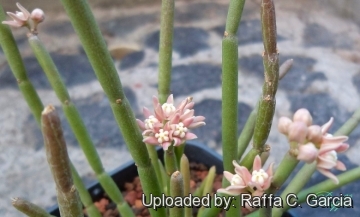 Cynanchum vanlessenii Photo by: Raffa C. Garcia
Cynanchum vanlessenii Photo by: Raffa C. Garcia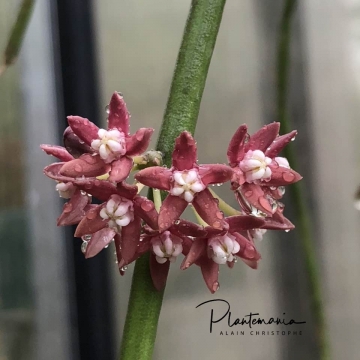 Cynanchum vanlessenii Photo by: © Plantemania
Cynanchum vanlessenii Photo by: © Plantemania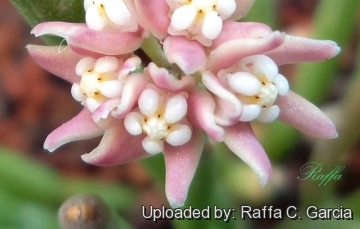 Cynanchum vanlessenii Photo by: Raffa C. Garcia
Cynanchum vanlessenii Photo by: Raffa C. Garcia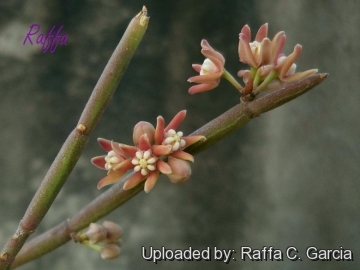 Cynanchum vanlessenii Photo by: Raffa C. Garcia
Cynanchum vanlessenii Photo by: Raffa C. Garcia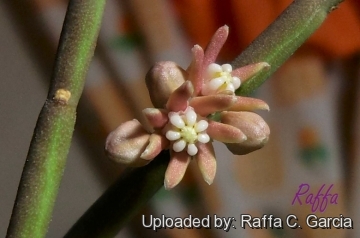 Cynanchum vanlessenii Photo by: Raffa C. Garcia
Cynanchum vanlessenii Photo by: Raffa C. Garcia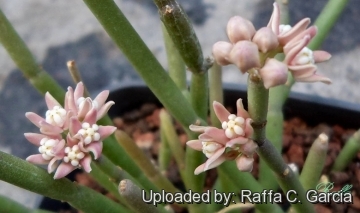 Cynanchum vanlessenii Photo by: Raffa C. Garcia
Cynanchum vanlessenii Photo by: Raffa C. GarciaSend a photo of this plant.The gallery now contains thousands of pictures, however it is possible to do even more. We are, of course, seeking photos of species not yet shown in the gallery but not only that, we are also looking for better pictures than those already present.
Read More... Cultivation and Propagation: Cynanchum vanlesseniiSN|29279]]SN|29279]] (syn. Sarcostemma vanlesseniiSN|29281]]SN|29281]]) is an easy species to grow that is suited for any well drained soil in full sun. Give the plant an airy growing medium which mainly consists of non organic material such us clay, pumice, lava grit, and only a little peat or leaf-mould. Water regularly during the active growing season from March to September. No water should ever be allowed to stand around the roots. Keep almost completely dry in winter. It is a relatively fast growing and long lived plant and once established, it will be content in its position and with its soil for years.
Fertilization: Need a perfect fertilizer diet in summer. Use preferably a cacti and succulents fertilizer with high potassium content including all micro nutrients and trace elements or slow release fertilizer.
Exposure: This plant has an excellent heat tolerance, and need full sun to light shade exposures, but can tolerate shade. However shade grown plants will tend to produce fewer, and etiolated growth. But if it is possible to keep the growth of this species compact, with denser, shorter stems such plants can be outright attractive.
Watering: Water regularly during the active growing season. No water should ever be allowed to stand around the roots. Keep almost completely dry in winter. Care must be given in watering, keeping them warm and wet while growing, and cooler and dry when dormant.
Hardiness: Some cold tolerance, however it can be difficult to get it to look its best without a good amount of heat and sun and so it is only really suited to the tropics (USDA Zones 9-12). It can be grown outdoors in the summer months to benefit from direct exposure to light, and especially exposure to high summer temperatures. Protection in a warm greenhouse in the middle of the winter will greatly increase the survival rate.
Disease and pests: The aphid occasionally feeds on young stems. The plant are also attractive to mealy bugs.
Rot: Rot it is only a minor problem with Cynanchum if the plants are watered and “aired” correctly. If they are not, fungicides won't help all that much. It is very unlikely to lose this plant from root rot from excessive water.
Maintenance: Re-pot every two-three years. It like quite small pots, repot in early spring. It can be pruned for shape and branching and trim off the dead 'arms'.
Known hazards: As mentioned above, all parts of the plant exude a milky latex when damaged. Contact with the latex should be avoided. This latex is sometimes – but not always – toxic may cause dermatitis in some people, and particularly dangerous for the eyes and mucous membranes.
Propagation: The plant can be reproduced by seeds or cuttings. The seed will loose viability in storage, and may not be viable the following year, so the seed should be planted as soon after harvesting as possible. Use a well-drained sowing medium of sandy loam with very well-rotted compost, and preferably sieved river sand to cover the seed. The ideal size of the sand grains should be 1 mm. Germination usually occurs within about a week or two. Cuttings are relatively easy in a 1:1:1 mixture of pumice, vermiculite and potting soil, at c. 27°C. If you remove an offset, remember to let it dry for some days, letting the wound heal (cuttings planted too soon easily rot before they can grow roots). Lay it on the soil and insert the stem end partially into the substrate. Try to keep the cutting somewhat upright so that the roots are able to grow downward. It is better to wash the cut to remove the latex. The newly planted stems take a few weeks to establish, and then start growing. The best time to strike cuttings is spring.

















